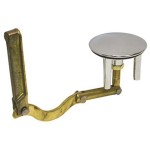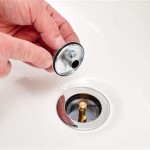Natural Stone Bathtub Cost: A Comprehensive Guide
The allure of a natural stone bathtub extends beyond mere functionality, offering a transformative bathing experience rooted in luxury and aesthetic appeal. These unique fixtures, carved from materials such as marble, granite, travertine, and limestone, bring a touch of nature's grandeur into the bathroom. However, the beauty and bespoke nature of natural stone bathtubs come at a cost significantly higher than that of acrylic or cast iron tubs. Understanding the factors influencing the price of these luxurious additions is essential for anyone considering investing in one.
This article provides a comprehensive breakdown of the costs associated with natural stone bathtubs, exploring the various elements that contribute to the final price tag. It will cover different stone types, their characteristics, the manufacturing processes involved, transportation considerations, installation costs, and potential maintenance expenses. Armed with this detailed knowledge, prospective buyers can make informed decisions and accurately budget for the acquisition of their dream stone bathtub.
Stone Type and Its Impact on Price
The primary determinant of a natural stone bathtub's cost is the type of stone used in its construction. Different stones possess varying degrees of rarity, durability, and aesthetic value, directly impacting their price. Marble, granite, travertine, and limestone are among the most popular choices, each offering a unique blend of characteristics and price points.
Marble, renowned for its exquisite veining and luxurious appearance, is frequently considered a premium option. The price of a marble bathtub can vary considerably based on the specific type of marble used. Carrara marble, a more readily available variety, will generally be less expensive than Calacatta marble, known for its bold, dramatic veining and pristine white background. The presence of rare or highly sought-after colors and patterns will further increase the price of the marble.
Granite, prized for its exceptional durability and resistance to staining, offers a more robust alternative to marble. While granite bathtubs are generally less expensive than comparable marble tubs, the price can fluctuate depending on the granite's color, pattern complexity, and origin. Exotic granite varieties, imported from specific regions, often command higher prices due to their unique visual characteristics and the logistical challenges associated with their extraction and transportation.
Travertine, characterized by its natural pits and textured surface, provides a rustic and earthy aesthetic. Travertine is typically less expensive than marble or granite, making it a more accessible option for those seeking a natural stone bathtub within a tighter budget. However, the cost can still vary depending on the quality and color of the travertine, as well as the extent of any filling or sealing treatments applied to the stone.
Limestone, known for its subtle hues and smooth texture, offers a versatile and understated elegance. Limestone is generally a more affordable natural stone option compared to marble and granite. The price of a limestone bathtub will depend on the specific type of limestone, its color consistency, and the presence of any unique fossil inclusions or natural variations that enhance its character.
Beyond the stone type, the quality of the stone also plays a crucial role in determining the final price. Blocks of stone with fewer imperfections, consistent color, and minimal veining inconsistencies are generally more expensive. The sourcing and extraction methods employed can also influence the cost, with ethically sourced and sustainably extracted stone often commanding a premium.
Manufacturing Processes and Craftsmanship
The manufacturing process involved in creating a natural stone bathtub significantly impacts its overall cost. Unlike mass-produced acrylic or cast iron tubs, natural stone bathtubs are often crafted using a combination of sophisticated machinery and skilled handcraftsmanship. The complexity of the design, the size of the tub, and the level of detail incorporated into its surface all contribute to the labor intensity and, consequently, the price.
The process typically begins with the selection of a suitable block of stone, carefully chosen for its quality, size, and aesthetic characteristics. The stone is then cut into the desired shape using specialized sawing equipment, often employing diamond-tipped blades to ensure precision and minimize waste. The rough shape is further refined and sculpted using a variety of tools, including grinders, polishers, and chisels.
Creating the interior cavity of the bathtub requires considerable skill and precision. Stone masons carefully excavate the interior, gradually shaping the walls and base to create a comfortable and ergonomic bathing space. This process often involves the use of specialized drilling and grinding tools, as well as meticulous hand-finishing to achieve a smooth and seamless surface.
The exterior of the bathtub is then meticulously sculpted and polished to achieve the desired finish. This may involve multiple stages of grinding, honing, and polishing, using progressively finer abrasives to bring out the stone's natural luster and enhance its veining or texture. The edges and corners are carefully rounded and smoothed to ensure safety and comfort.
Some natural stone bathtubs feature intricate carvings or decorative elements, further increasing the labor intensity and cost. These embellishments may involve hand-carved floral motifs, geometric patterns, or custom-designed details that reflect the client's personal preferences. The skill and artistry required to execute these intricate designs demand the expertise of highly skilled artisans, adding to the overall price of the bathtub.
The final stage of the manufacturing process involves sealing the stone to protect it from water damage and staining. A high-quality sealant is applied to the interior and exterior surfaces of the bathtub, penetrating the pores of the stone and creating a protective barrier. This sealant is typically reapplied periodically to maintain the stone's integrity and prevent discoloration or deterioration.
Transportation and Installation Expenses
The cost of transporting and installing a natural stone bathtub can be substantial, particularly given the weight and fragility of these fixtures. Natural stone bathtubs are significantly heavier than acrylic or cast iron tubs, requiring specialized equipment and handling procedures. The transportation costs will depend on the distance the bathtub needs to be shipped, the mode of transportation used, and the complexity of the delivery route.
Shipping a natural stone bathtub typically involves crating the fixture securely to protect it from damage during transit. The crate is then loaded onto a truck or freight container for transportation to the delivery site. The cost of crating and shipping can vary depending on the size and weight of the bathtub, as well as the distance it needs to be transported.
Upon arrival at the delivery site, the bathtub needs to be carefully unloaded and moved into the bathroom. This may require the use of specialized lifting equipment, such as forklifts or cranes, to maneuver the heavy fixture into position. The cost of unloading and moving the bathtub will depend on the accessibility of the bathroom and the complexity of the installation process.
Installing a natural stone bathtub requires the expertise of experienced plumbers and contractors. The installation process typically involves connecting the bathtub to the water supply and drain lines, ensuring proper leveling and support, and sealing the perimeter of the bathtub to prevent water leaks. The cost of installation will depend on the complexity of the plumbing connections, the condition of the existing plumbing, and the labor rates charged by the installation professionals.
Preparing the bathroom floor to support the weight of a natural stone bathtub is crucial. Reinforcing the floor joists may be necessary, especially in older homes or buildings with inadequate structural support. The cost of floor reinforcement will depend on the extent of the work required and the materials used.
Additionally, the cost of disposing of the old bathtub can also contribute to the overall expense. Proper disposal methods should be employed to comply with local regulations and avoid environmental damage. The cost of disposal will depend on the size and material of the old bathtub, as well as the disposal fees charged by local waste management facilities.
In conclusion, the cost of a natural stone bathtub is a multifaceted calculation involving the type and quality of stone, the complexity of the manufacturing process, and the expenses associated with transportation and installation. Careful consideration of these factors is essential for accurately budgeting and ensuring a successful acquisition of this luxurious bathroom fixture. It is also crucial to factor in potential maintenance costs, such as periodic sealing and cleaning, to maintain the bathtub's beauty and longevity over time.

Onyx Natural Stone Bathtub

Natural Stone Tub Lavare

Antique River Cobble Stone Tub Handcrafted Natural Bathtub Elegant And Unique Rustic Design For Luxurious Bathroom Interiors

Marble Stone Bathtub Praesenti Lux4home

Onyx Natural Stone Bathtub

Natural Stone Tub Lavare

Onyx Natural Stone Bathtub

River Boulder Natural Stone Bathtub

Natural Stone Bathtubs White Fantasy Marble Bath Tubs From Stonecontact Com

Onyx Bathtub Natural Stone Hand Cut Extra Large At Impact Imports
Related Posts








